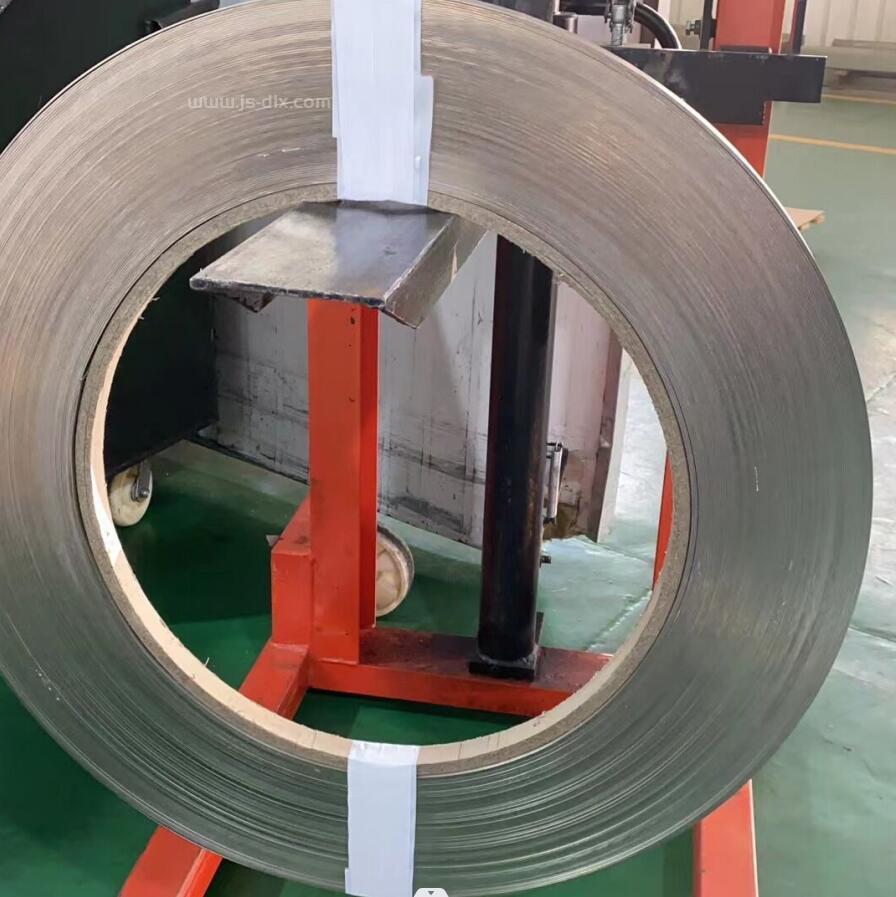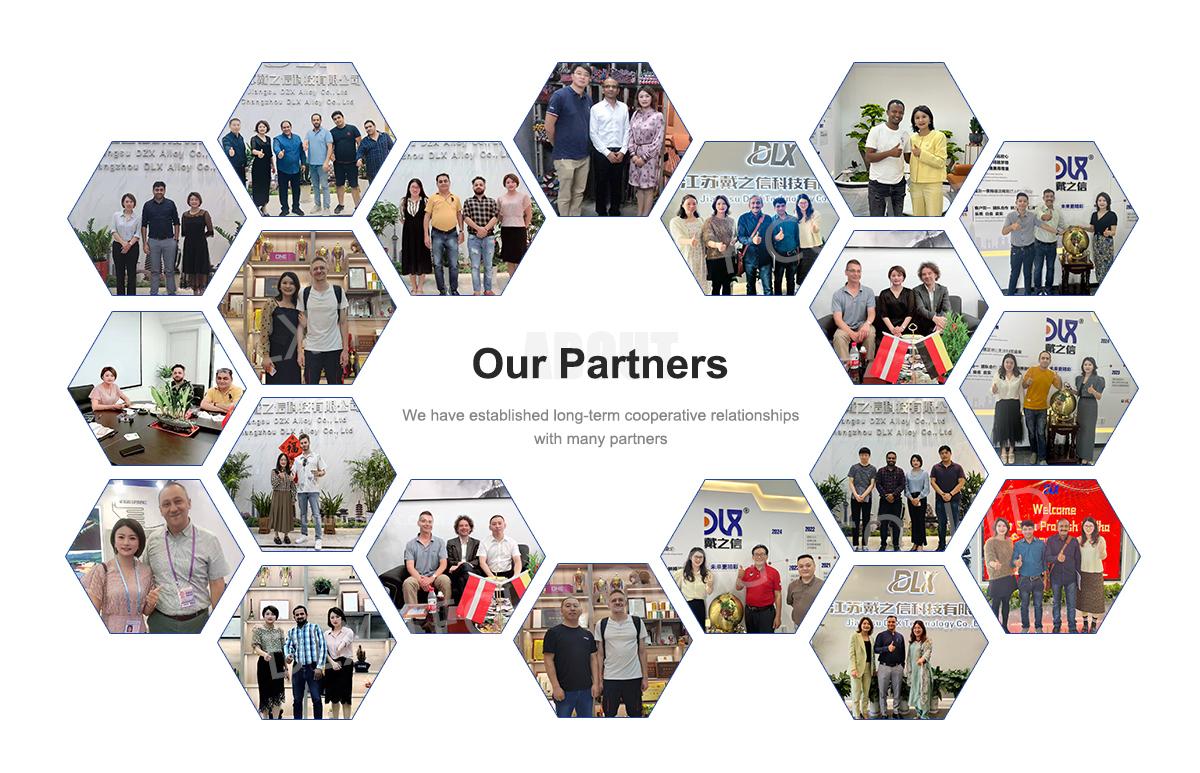Product Description
L605 strip is a versatile material with excellent high-temperature strength, corrosion resistance, and durability, making it suitable for various demanding applications across industries. Here are some key areas where L605 alloy strips are commonly used:
1. Aerospace Industry
Turbine Components: L605 strips are often used in gas turbine engines for parts such as turbine blades, combustor liners, afterburners, and other high-temperature sections where heat resistance and oxidation resistance are critical.
Exhaust Systems: The strips are utilized in exhaust components that must endure extreme temperatures and corrosive gases during flight.
2. Power Generation
Gas and Steam Turbine Parts: L605 strips are used to fabricate components in gas and steam turbines where high strength, fatigue resistance, and creep resistance are required at elevated temperatures.
Heat Shields and Combustion Chambers: The strips are employed in power plants for heat shields and combustion chambers, which experience high thermal stress and must resist oxidation and corrosion.
3. Medical Industry
Surgical Instruments: L605 strips can be used in medical devices and surgical instruments, especially those subjected to sterilization processes or that need to retain strength and corrosion resistance over long periods.
Orthopedic Implants: In some cases, L605 strips may be used in biomedical implants that require strength and biocompatibility.
4. Chemical Processing Industry
Heat Exchangers and Reactors: The high corrosion resistance of L605 makes it suitable for components such as heat exchangers, reactors, and other equipment used in chemical processing plants, particularly those dealing with aggressive media and high temperatures.
Furnace Linings: L605 strips are used in furnaces and other high-heat environments where resistance to thermal cycling and oxidation is essential.
5. Automotive Industry
Turbocharger and Exhaust Components: In high-performance engines, L605 alloy strips can be used in the production of turbochargers, exhaust valves, and other components exposed to extreme heat and corrosive exhaust gases.
6. Nuclear Industry
Fuel Assemblies: L605 is used in nuclear reactors for components like control rod assemblies and other critical parts where high strength, fatigue resistance, and corrosion resistance in extreme environments are needed.
Pressure Vessels: It’s also used in the construction of pressure vessels that are subject to both high temperatures and radiation exposure.
7. Industrial Applications
Springs and Fasteners: L605 strips are used to produce high-performance springs and fasteners that must maintain their strength and elasticity under high temperatures and corrosive conditions.
Seals and Bearings: The strips can be used to manufacture seals, bearings, and gaskets that require wear resistance and mechanical stability in extreme conditions.
8. Marine Applications
Marine Engine Components: L605 strips are used in components of marine engines that are subjected to high heat and saltwater corrosion, such as exhaust manifolds and heat exchangers.
Key Properties of L605 Strip:
High-Temperature Strength: Maintains mechanical properties at temperatures up to 1800°F (980°C).
Corrosion Resistance: Resists oxidation, corrosion, and wear, making it ideal for harsh environments.
Fabricability: Despite its strength, L605 strips can be formed, welded, and fabricated into complex shapes.
In summary, L605 strips are primarily used in applications where high strength, durability, and corrosion resistance are required at elevated temperatures, making them ideal for aerospace, power generation, chemical processing, and other high-performance industries.
Chemical Composition For L605 Strip
| Carbon | 0.05-0.15 |
| Manganese | 1.0-2.0 |
| Silicon | 0.40 max. |
| Chromium | 19.0-21.0 |
| Nickel | 9.0-11.0 |
| Tungsten | 14.0-16.0 |
| Phosphorus | 0.040 max. |
| Sulfur | 0.030 max. |
| Iron | 3.0 max. |
| Cobalt | Balance* |
Physical Constants for L605 Strip
| Density | lb/in3 | 0.335 |
| g/cm3 | 9.27 | |
| Melting Range | °F | 2426-2570 |
| °C | 1330-1410 | |
| Specific Heat | at 70°F, Btu/lb°F | 0.092 |
| at 21 °C, J/kg°C | 385 | |
| Permeability at 200 oersted | 1.002 | |
| Thermal Conductivity | Btu•in/ft2•h•°F | 65 |
| W/m•°C | 9.4 | |
| Electrical Resistivity | (75°F), ohm•circ mil/ft | 533.2 |
| (24°C), microohm-m | 0.886 | |
Properties For L605 Strip
 25) is a cobalt-based superalloy known for its excellent mechanical properties and high-temperature capabilities. Here are the key properties of Alloy L605:
25) is a cobalt-based superalloy known for its excellent mechanical properties and high-temperature capabilities. Here are the key properties of Alloy L605:1. High-Temperature Strength
Retains high strength and good oxidation resistance at temperatures up to 1800°F (980°C).
Useful in high-stress applications where sustained high temperatures are a factor.
2. Oxidation and Corrosion Resistance
Excellent oxidation resistance in air up to 2000°F (1093°C).
Resists corrosion in various environments, including oxidizing and reducing atmospheres, as well as saltwater.
3. Wear and Galling Resistance
Exhibits good resistance to wear and galling, which is useful in parts subjected to friction at elevated temperatures.
4. Fabricability
Although a strong material, Alloy L605 is still fabricable through various methods, including forming, welding, and machining.
5. Creep and Fatigue Resistance
High resistance to creep and fatigue at elevated temperatures, making it ideal for components that experience thermal cycling and mechanical stress over time.
6. Room Temperature Ductility
Shows good ductility at room temperature, although prolonged exposure to intermediate temperatures can reduce this property (common in superalloys).
7. Chemical Composition
Primary elements include cobalt (Co), chromium (Cr), tungsten (W), nickel (Ni), and a small percentage of iron (Fe).
The alloy contains around 10-20% tungsten, which contributes to its strength and corrosion resistance.
8. Applications
Frequently used in gas turbine engine components, combustion chambers, afterburners, and other high-temperature applications in aerospace and power generation industries.
These properties make Alloy L605 highly suitable for high-performance applications in extreme environments, where both heat and mechanical stress are present.

L605 Strip is a nickel-based high-temperature resistant alloy known for its excellent mechanical properties, corrosion resistance, and stability at elevated temperatures. It is primarily used in industries where materials are exposed to extreme heat, pressure, and corrosive environments. Common application areas for GH5605 include:
Aerospace industry: Used in turbine blades, combustion chambers, and other components of aircraft engines and gas turbines that require high strength and resistance to oxidation at high temperatures.
Power generation: Employed in the manufacturing of parts for gas turbines and nuclear reactors due to its ability to maintain strength under thermal stress and resist oxidation.
Petrochemical industry: Used in high-temperature chemical processing equipment, such as reactors and heat exchangers, due to its corrosion resistance in aggressive environments.
Marine applications: Applied in marine engines and offshore platforms that require materials with high resistance to saltwater corrosion and heat.
Automotive industry: Used in the production of turbochargers and exhaust valves for high-performance engines.
GH5605's versatility in high-temperature environments makes it a preferred choice for critical components in these industries.








